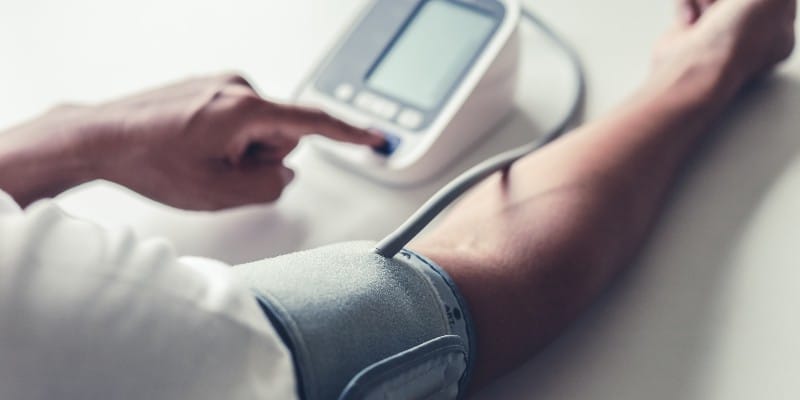
Our “Innovators Worth Watching” series spotlights interesting and potentially disruptive players across a spectrum of industries.
According to the CDC, an estimated 6.2 million people in the US suffer from heart failure. There are a number of treatment pathways for the disease, ranging from medication to invasive procedures such as heart surgery. A key part of living with heart failure is continuing to track and manage symptoms on one’s own; but for many this can be a complex, logistical challenge.
Story Health is a health technology company that acts as a bridge between patients and specialists, with the goal of understanding patients’ “full story.” Story users receive wearable monitors that collect data such as blood pressure and blood oxygen levels. Cardiologists then gain access to this up-to-date information and are able to use it to rework patient health plans between visits. Story’s health coaches, who are cardiac nurses, send reminders to patients for steps such as checking blood pressure, and also manage non-clinical barriers to heart failure care, such as medication refills and transportation to appointments.
Story is filling a need on both the patient and provider side of heart failure, but is their model disruptive? We put it to our six-question test.
1. Does it target people whose only alternative is to buy nothing at all (nonconsumers) or who are overserved by existing offerings in the market?
Yes. Story Health targets nonconsumers of continuous heart failure management. Many symptoms of heart failure need to be closely tracked, and certain steps need to be taken at home to ensure that things do not take a turn for the worse; patients may not be able to track, or may have difficulty tracking, their health on their own, particularly when it comes to medication adherence.
Story Health also targets those who may be nonconsumers of care, simply because they cannot easily get to their cardiologist. Instead, Story allows patients to speak with health coaches when they have specific questions, particularly issues involving non-clinical drivers of health (such as transportation and diet).
2. Is the offering not as good as existing offerings as judged by historical measures of performance?
Yes. Instead of receiving medical information directly from their patients, cardiologists receive updates through Story. This may be considered “not as good,” as cardiologists are not receiving information through their own means, and are instead receiving it through a third party. On the flip side of that, patients are not speaking directly to their cardiologist about concerns they might have outside of their visits, rather they are texting Story health coaches about any worrisome health changes and communicating with their coaches for any immediate needs.
3. Is the innovation simpler to use, more convenient, or more affordable than existing offerings?
Yes. Story Health makes continuous heart failure management significantly more convenient for patients. Story not only allows patients to have medications delivered to their homes, but it also provides at-home blood draws when care plan updates require blood work. It also makes it more convenient to address emerging health concerns, allowing them to be addressed over the phone instead of needing to go to a cardiologist or an emergency room. Using a text-based communication system is simple and easy to use when compared to learning an entirely new application.
4. Does the offering have a technology that enables it to improve and capture a larger market over time?
Yes. Using a combination of wearable technology and simple text messaging, Story Health allows patients to track their own health from the comfort of their own home. Story takes information gathered from these wearable devices to create action items that are texted to patients. Using SMART on FHIR, the information collected by Story devices is integrated seamlessly into EHRs such as EPIC and Cerner, allowing providers to easily gain access to up-to-date information.
Story Health is already looking to expand their model to other cardiac issues beyond heart failure. Additionally, its model could allow it to move into other medical conditions, especially as wearable health monitors expand in scope.
5. Is the technology paired with an innovative business model that allows it to be sustainable?
Somewhat. Story Health partners with health systems, and those health systems in turn enroll patients into the service. The program is covered by traditional and governmental insurance, such as Medicare and Medicaid, which reimburse both the health system and Story for patient care. Partnering with both systems and insurers allows Story to establish a sustainable revenue model.
6. Are existing providers motivated to ignore the new innovation and not feel threatened by it at the outset?
Yes. Some cardiologists may be hesitant to pass off patient monitoring, especially when the main point of communication is a health coach, rather than the cardiologist themselves. However, the benefit for cardiologists—namely, getting consistently updated health information on their patients in order to have a continuously up-to-date care plan—could lead forward-thinking cardiologists to be eager to partner with Story Health.
Beyond being a useful tool for both cardiologists and patients, Story Health has the potential to disrupt traditional specialist care, making treatment less visit-heavy and keeping patients out of the hospital. Currently, Story Health is continuing to secure funding to expand their model, and it is running a clinical trial to assess the model’s efficacy in treating heart failure. Personally, I am excited to see the results of that trial, and will be following Story Health’s continued growth.


